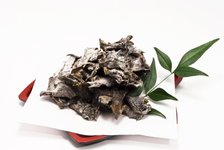Sublime
An inspiration engine for ideas
sweet, salty, sour, bitter, and savory (umami). Umami literally means “pleasant savory taste” or “deliciousness” in Japanese and owes its mouthwatering quality mostly to glutamate, an amino acid classically found in monosodium glutamate, or MSG.
David Perlmutter • Drop Acid: The Surprising New Science of Uric Acid—The Key to Losing Weight, Controlling Blood Sugar, and Achieving Extraordinary Health
A little after two, we made it back to Minowa, the closest station to my place. Stopping along the way for a 210-yen bowl of noodles, we braved the heat and walked the ten minutes home, while the cries of cicadas smeared the atmosphere.
Mieko Kawakami, Sam Bett, • Breasts and Eggs
What is Kombu? The Secret to Japanese Cuisine | We Love ...
welovejapanesefood.com
‘From top left,’ began Nagare, tucking the tray under his arm, ‘Miyajima oysters, simmered Kurama-style, miso-glazed baked butterburs with millet cake, bracken and bamboo shoot stew, chargrilled moroko, breast of Kyoto-reared chicken with a wasabi dressing, and vinegared Wakasa mackerel wrapped in pickled Shogoin turnip. In the bottom right you
... See moreJesse Kirkwood • The Kamogawa Food Detectives
The world of taste is commonly described as encompassing five—possibly six—basic characteristics: sweetness, sourness, saltiness, bitterness, savoriness (umami), and possibly heartiness (kokumi).
Karen MacNeil • The Wine Bible
Haiku and waka poems convey perhaps more easily than painting the subtle differences between the four moods of sabi, wabi, aware, and yugen.
